Have you ever wondered: How many teeth do humans actually have?
At first, the answer might seem simple, but it’s more fascinating than most people realize. Humans don’t just grow one set of teeth—they go through two major stages (baby and adult) and may even have extra wisdom teeth that change the final count.
“On average, humans have 20 baby teeth and 32 permanent teeth, but this number can vary depending on whether wisdom teeth fully erupt or need to be removed.” – American Dental Association
Teeth aren’t just tools for chewing. They reflect growth, development, and even health conditions. From 20 tiny baby teeth that fall out during childhood to a full set of 32 adult teeth, including wisdom teeth, our dental journey is unique. But here’s the twist: not everyone ends up with the same number of teeth. Some people never develop wisdom teeth, while others have them removed due to overcrowding or pain.
In this article, we’ll cover everything you need to know about:
- How many baby teeth do humans have?
- How many adult teeth do humans have?
- Do wisdom teeth always count?
- How many teeth do humans have without wisdom teeth?
- How many sets of teeth do humans have throughout life?
We’ll also look at how humans compare with other animals when it comes to teeth. By the end, you’ll have a clear, medically accurate, and easy-to-understand answer to one of the most common dental questions:
👉 Exactly how many teeth do humans have?
- Baby Teeth (Primary Dentition)
- Adult Teeth (Permanent Dentition)
- Wisdom Teeth (Third Molars)
- How Many Teeth Do Humans Have Without Wisdom Teeth?
- How Many Teeth Do Humans Have Including Wisdom Teeth?
- How Many Sets of Teeth Do Humans Have?
- Quick Comparison Table
- How Many Sets of Teeth Do Humans Have in a Lifetime?
- Tooth Anatomy – Breaking Down the Structure of Human Teeth
- How Many Teeth Do Humans Have on Top and Bottom?
- Dental Formula of Humans Explained
- Tooth Development Stages: From Infancy to Adulthood
- Common Dental Issues Related to Tooth Count
- How Dentists Check and Track Your Teeth
- Table: Human Teeth vs. Animal Teeth Comparison
- FAQs: Symptoms, Tooth Count, and Dental Concerns
- Conclusion
Baby Teeth (Primary Dentition)
Baby teeth, also known as primary teeth or deciduous teeth, are the very first set of teeth humans develop. They play a critical role in early childhood by helping children chew food properly, learn speech sounds, and reserve space for permanent teeth.
How Many Baby Teeth Do Humans Have?
Humans have a total of 20 baby teeth. These are equally divided:
- 10 teeth on the top (maxillary arch)
- 10 teeth on the bottom (mandibular arch)
The 20 baby teeth include:
- 8 incisors (4 upper, 4 lower)
- 4 canines (2 upper, 2 lower)
- 8 molars (4 upper, 4 lower)
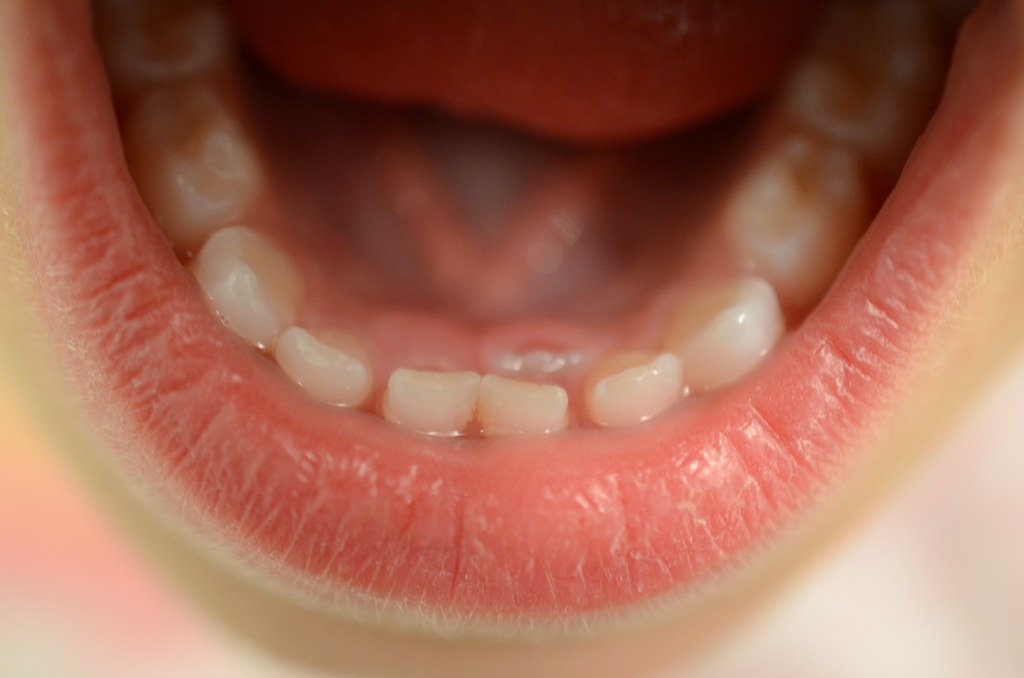
Timeline of Baby Teeth Eruption
Baby teeth usually begin to appear at around 6 months of age and continue to erupt until the child is about 2 to 3 years old.
- 6–10 months → Lower central incisors erupt first
- 8–12 months → Upper central incisors appear
- 9–13 months → Lateral incisors come in
- 16–22 months → Canines emerge
- 13–19 months → First molars erupt
- 23–33 months → Second molars appear (last baby teeth)
By age 3, most children have their full set of 20 primary teeth.
“Baby teeth act as placeholders for permanent teeth. If a baby tooth is lost too early due to decay or injury, it can cause alignment issues when permanent teeth grow in.” – WebMD
Why Baby Teeth Are Important
Many people mistakenly believe that baby teeth don’t matter because they eventually fall out. However, they are extremely important for:
- Proper chewing and digestion – helping children eat a variety of foods.
- Speech development – certain sounds require teeth for proper pronunciation.
- Jaw and facial growth – stimulating bone development.
- Guiding adult teeth – maintaining correct spacing until permanent teeth erupt.
Shedding of Baby Teeth
Children usually start losing baby teeth around age 6, beginning with the incisors. This process continues until around age 12 or 13, when most permanent teeth have replaced the baby set.
Adult Teeth (Permanent Dentition)
After the baby teeth fall out, they are replaced by a permanent set called adult teeth or secondary dentition. Unlike baby teeth, these are meant to last a lifetime with proper care.
How Many Adult Teeth Do Humans Have?
Humans typically have 32 adult teeth, divided equally:
- 16 teeth in the upper jaw (maxilla)
- 16 teeth in the lower jaw (mandible)
Breakdown of Adult Teeth
The 32 permanent teeth include:
- 8 incisors (4 upper, 4 lower) – flat-edged teeth at the front for cutting food
- 4 canines (2 upper, 2 lower) – sharp teeth for tearing food
- 8 premolars (4 upper, 4 lower) – used for crushing and grinding food
- 12 molars (6 upper, 6 lower, including wisdom teeth) – broad, flat teeth for grinding food thoroughly
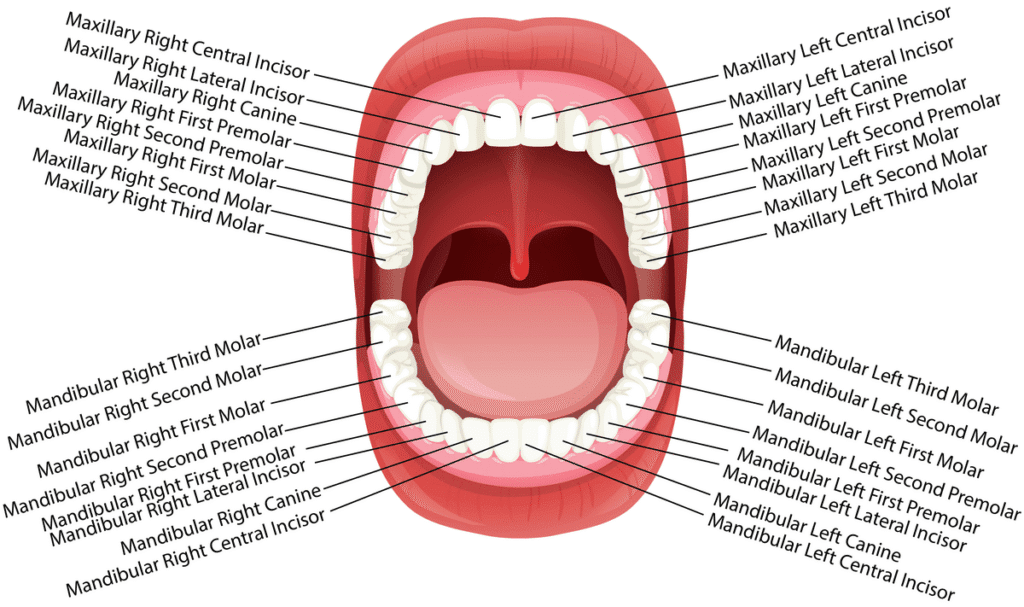
Timeline of Permanent Tooth Eruption
Permanent teeth usually begin to emerge at age 6 and continue until the early twenties:
- 6–7 years → First molars and central incisors erupt
- 7–8 years → Lateral incisors appear
- 9–12 years → Canines and premolars emerge
- 12–13 years → Second molars come in
- 17–25 years → Wisdom teeth (third molars) may erupt, if they do at all
“Most adults will have 28 functional teeth if their wisdom teeth never develop or are removed.” – American Dental Association (ADA)
Importance of Adult Teeth
Adult teeth are designed to last a lifetime and play critical roles in:
- Chewing & digestion – breaking down food properly for nutrition
- Speech clarity – shaping sounds and words
- Facial aesthetics – maintaining facial structure and smile appearance
- Overall health – poor oral health can lead to systemic issues like heart disease and diabetes
Tooth Replacement and Longevity
Unlike baby teeth, permanent teeth do not regrow if lost or damaged. If an adult tooth is extracted or knocked out, dentists may recommend solutions like:
- Dental implants
- Bridges
- Dentures
“Losing adult teeth prematurely can cause jawbone shrinkage and bite misalignment. Early dental care is essential to preserve them.”
Wisdom Teeth (Third Molars)
Wisdom teeth, also called third molars, are the last set of teeth to appear in the human mouth. They usually erupt between the ages of 17 and 25, though not everyone develops them.
(The image displayed earlier also illustrates the Third Molars)
How Many Wisdom Teeth Do Humans Have?
- Most people develop 4 wisdom teeth (1 in each corner of the mouth).
- Some individuals may have fewer than 4, or even none at all.
- Rarely, people may develop extra wisdom teeth, known as supernumerary teeth.
Function of Wisdom Teeth
In early human history, when diets consisted of coarse foods like raw plants and meat, wisdom teeth helped in grinding tough material. However, with modern diets and cooking methods, their role has become less significant.
Common Issues with Wisdom Teeth
Since wisdom teeth erupt late, often when the jaw is already fully developed, they may cause problems such as:
- Impaction – teeth fail to fully emerge and remain trapped in the gums or jawbone.
- Crowding – pushing against nearby teeth and causing misalignment.
- Infections – partially erupted wisdom teeth create gum pockets where bacteria thrive.
- Cysts or damage – impacted wisdom teeth can affect bone and neighboring teeth.
Symptoms of Wisdom Tooth Problems
- Pain or swelling in the back of the mouth
- Jaw stiffness or discomfort
- Red, swollen, or bleeding gums near the wisdom teeth
- Difficulty opening the mouth or chewing properly
“According to the American Dental Association, removal of impacted wisdom teeth may be recommended to prevent long-term oral health complications.”
Do You Need Wisdom Teeth Removed?
Dentists may suggest extraction if:
- The teeth are impacted
- They are causing pain, infections, or decay
- They are crowding or damaging nearby teeth
However, not all wisdom teeth need removal. If they erupt properly, are healthy, and align well, they can remain in the mouth without issues.
How Many Teeth Do Humans Have Without Wisdom Teeth?
If we exclude the third molars (wisdom teeth), the number of teeth in the adult mouth is reduced.
Adult Teeth Without Wisdom Teeth
- Adults normally have 32 teeth (including wisdom teeth).
- Without wisdom teeth, the number becomes 28 permanent teeth.
These 28 teeth consist of:
- 8 incisors
- 4 canines
- 8 premolars
- 8 molars (excluding wisdom teeth)
Why Excluding Wisdom Teeth Matters
Many adults today undergo wisdom tooth removal, making 28 teeth the practical number of functional adult teeth for a large portion of the population.
Dentists often refer to this as the “functional adult dentition”—the set of teeth that most people rely on for daily chewing and speaking.
Common Reasons Wisdom Teeth Are Missing
- Surgical extraction due to pain, impaction, or crowding.
- Natural absence – some people are simply born without them.
- Evolutionary changes – modern diets require less chewing, so wisdom teeth are becoming less common.
“In modern humans, many dental professionals now consider 28 teeth as the standard functional adult set.”
How Many Teeth Do Humans Have Including Wisdom Teeth?
When we count wisdom teeth, the total number of adult teeth rises.
Adult Teeth Including Wisdom Teeth
- The complete adult dentition consists of 32 permanent teeth.
- These include:
- 8 incisors
- 4 canines
- 8 premolars
- 12 molars (with 4 wisdom teeth)
So, the maximum number of teeth an adult can have is 32.
Wisdom Teeth Breakdown
- Wisdom teeth = third molars, usually appearing between ages 17–25.
- Located at the very back of the mouth, two on the top and two on the bottom.
Challenges With Wisdom Teeth
Although humans technically have 32 teeth including wisdom teeth, not everyone keeps them because they can cause:
- Jaw pain and crowding
- Impacted growth (trapped in the gums)
- Gum infection
- Damage to nearby teeth
Dentist Recommendation
According to the American Dental Association (ADA), wisdom teeth should only be removed if they are causing pain, damage, or risk of infection. If they are healthy and properly aligned, they can remain.
“While 32 teeth is the official number with wisdom teeth, many adults function perfectly with 28.”
How Many Sets of Teeth Do Humans Have?
Humans develop two natural sets of teeth during their lifetime:
1. Primary (Baby) Teeth
- Also called deciduous teeth or milk teeth.
- Begin erupting around 6 months of age.
- A complete set includes 20 teeth (10 upper + 10 lower).
- These teeth are smaller and temporary but essential for chewing, speaking, and guiding permanent teeth into position.
2. Permanent (Adult) Teeth
- Start replacing baby teeth around age 6.
- By the early teens, most permanent teeth (except wisdom teeth) are present.
- A full adult set has 28 teeth without wisdom teeth or 32 teeth with wisdom teeth.
No Natural Third Set
Unlike sharks or crocodiles that regenerate teeth throughout life, humans only develop two sets. If permanent teeth are lost, they do not naturally regrow.
Dental Innovations
Today, dental implants, bridges, and dentures act as artificial replacements for missing teeth, functioning as a “third set” created by modern dentistry.
“Humans are diphyodonts — meaning we only grow two sets of teeth in our lifetime.”
When wisdom teeth are present and fully erupted, the total number of teeth in an adult mouth increases.
Total Teeth With Wisdom Teeth
- Adults with wisdom teeth have 32 teeth in total.
- This includes:
- 8 Incisors
- 4 Canines
- 8 Premolars
- 12 Molars (including 4 wisdom teeth)
Do All Adults Get Wisdom Teeth?
- Around 65–70% of people develop all four wisdom teeth, while others may only get one, two, or three.
- A small percentage never develop any wisdom teeth at all (a condition known as hypodontia).
When Do Wisdom Teeth Emerge?
- Usually between ages 17–25
- Some erupt without problems, but many become impacted and require removal.
“Dentists often monitor wisdom teeth with X-rays in late teenage years to prevent complications before they appear.”
Quick Comparison Table
| Tooth Category | Without Wisdom Teeth | With Wisdom Teeth |
|---|---|---|
| Incisors | 8 | 8 |
| Canines | 4 | 4 |
| Premolars | 8 | 8 |
| Molars | 8 | 12 |
| Total Teeth | 28 | 32 |
How Many Sets of Teeth Do Humans Have in a Lifetime?
Humans are diphyodonts, which means we develop two main sets of teeth in our lifetime.
1. Primary (Baby) Teeth
- Total: 20 teeth
- Begin erupting around 6 months of age
- Usually complete by age 3 years
- Purpose: Help in chewing, speaking, and holding space for permanent teeth.
2. Permanent (Adult) Teeth
- Total: 32 teeth (including wisdom teeth)
- Begin erupting around 6 years of age
- By early teenage years, most permanent teeth are in place (except wisdom teeth).
Why Only Two Sets of Teeth?
Unlike sharks or crocodiles that continuously grow teeth, humans have only two sets.
This is because:
- Our jaws stop growing after adulthood.
- Teeth are designed to last decades if properly cared for.
“Once adult teeth are lost, they do not naturally regrow — making dental care crucial for lifelong oral health.”
Rare Cases: Third Set of Teeth
- Some individuals experience hyperdontia, where extra teeth develop.
- These additional teeth are usually abnormal in shape and often require removal.
Tooth Anatomy – Breaking Down the Structure of Human Teeth
To understand how many teeth humans have and their function, it’s important to know the anatomy of a tooth. Each tooth has multiple layers, each with a specific role in keeping it strong and functional.
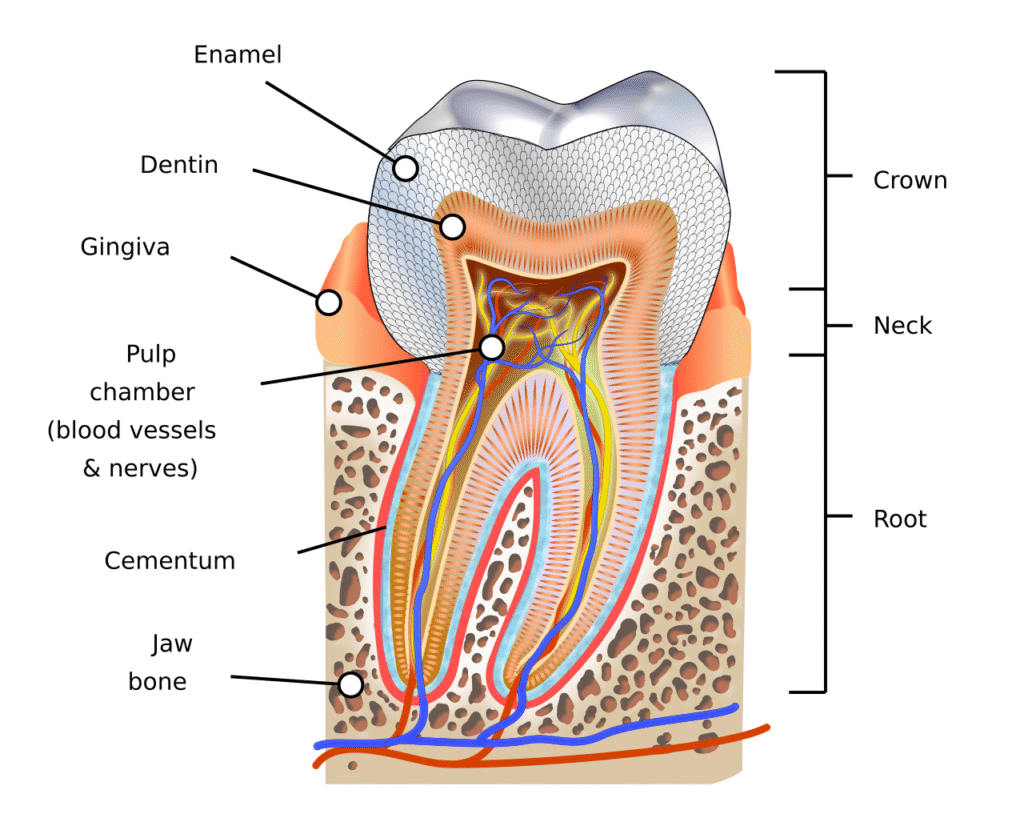
1. Crown
- The visible part of the tooth above the gum line.
- Covered with enamel, the hardest substance in the human body.
- Responsible for chewing, biting, and appearance.
2. Root
- Extends below the gum line and anchors the tooth into the jawbone.
- Surrounded by cementum and connected through the periodontal ligament.
- Provides stability when chewing.
3. Enamel
- Hard, white outer layer that protects against decay and daily wear.
- Cannot regenerate once damaged.
4. Dentin
- Lies beneath the enamel.
- Softer and more sensitive than enamel.
- Contains small tubules that transmit sensations (like pain or temperature) to the nerves.
5. Pulp
- The innermost part of the tooth.
- Contains blood vessels, connective tissue, and nerves.
- Vital for tooth nourishment and health.
6. Periodontal Ligament (PDL)
- A specialized connective tissue that attaches the tooth root to the surrounding bone.
- Acts as a shock absorber during chewing.
“Every tooth may look simple from the outside, but inside, it’s a complex structure with layers of protection, nerves, and support systems.”
How Many Teeth Do Humans Have on Top and Bottom?
Humans have two dental arches – the upper (maxillary) arch and the lower (mandibular) arch. These arches are symmetrical, meaning the left and right sides mirror each other.
- In Adults (32 Teeth with Wisdom Teeth):
- Top Jaw (Maxilla): 16 teeth
- Bottom Jaw (Mandible): 16 teeth
- In Adults (28 Teeth without Wisdom Teeth):
- Top Jaw: 14 teeth
- Bottom Jaw: 14 teeth
- In Children (20 Primary Teeth):
- Top Jaw: 10 teeth
- Bottom Jaw: 10 teeth
Each half of the jaw (left and right) contains:
- 2 Incisors – used for cutting food
- 1 Canine – sharp tooth for tearing
- 2 Premolars (in adults only, not in children) – used for grinding
- 2–3 Molars – for crushing and chewing food
🦷 Note: Premolars are only found in permanent teeth. Baby teeth don’t include them.
This symmetry ensures balanced chewing function and proper bite alignment.
Dental Formula of Humans Explained
Dentists and biologists often use a dental formula to describe the number and types of teeth in humans. It’s a shorthand way of showing how teeth are distributed in one half of the mouth (upper or lower), then multiplied by two for the full set.
The Adult Human Dental Formula
The standard formula for adults (permanent teeth) is:
2-1-2-3 / 2-1-2-3
Here’s what it means:
- 2 Incisors
- 1 Canine
- 2 Premolars
- 3 Molars
This is per quadrant (one-fourth of the mouth). Since we have four quadrants, multiply by 4:
- 8 Incisors
- 4 Canines
- 8 Premolars
- 12 Molars (including wisdom teeth)
- Total = 32 Teeth
The Child (Primary) Dental Formula
For children, the dental formula is simpler:
2-1-2 / 2-1-2
Which means:
- 2 Incisors
- 1 Canine
- 2 Molars
No premolars and no third molars (wisdom teeth).
Multiply by 4 quadrants:
- 8 Incisors
- 4 Canines
- 8 Molars
- Total = 20 Teeth
Why Dental Formula Matters
- Helps dentists and orthodontists plan treatments
- Useful for comparing human teeth with animals
- Helps track dental development in children
🦷 Note: If wisdom teeth are missing or removed, the adult dental formula changes to 2-1-2-2, giving a total of 28 teeth instead of 32.
Tooth Development Stages: From Infancy to Adulthood
Teeth don’t appear all at once—they follow a natural timeline of growth and replacement. Understanding this journey helps explain why humans have different sets of teeth at different ages.
- Infancy (0–6 months): No visible teeth yet, but tooth buds form inside the gums.
- Baby Teeth Eruption (6 months – 3 years): Primary teeth gradually erupt until a full set of 20 baby teeth is present.
- Mixed Dentition (6–12 years): Children have a combination of baby and permanent teeth as primary teeth fall out.
- Adolescence (12–18 years): Most permanent teeth, including premolars and molars, are in place.
- Young Adulthood (17–25 years): Wisdom teeth may erupt, although not everyone develops them.
“Tooth development is a lifelong journey, with changes from infancy through adulthood. Regular dental visits during these stages ensure healthy growth and alignment.”
Common Dental Issues Related to Tooth Count
Having too many or too few teeth—or problems with eruption—can affect oral health. Here are the most common issues:
- Hypodontia: Missing teeth that never develop (often wisdom teeth).
- Hyperdontia: Extra teeth beyond the normal count.
- Impacted Wisdom Teeth: Third molars that remain trapped under gums or bone.
- Tooth Loss: Caused by decay, gum disease, or injury, leading to reduced count.
- Overcrowding: Too many teeth in a small jaw, leading to misalignment.
Dentists use X-rays to check tooth development and provide treatments like braces, extractions, or implants if tooth count causes complications.
How Dentists Check and Track Your Teeth
Dentists play a crucial role in monitoring how many teeth humans have at each stage. They use:
- Oral Examinations: Visual checks for missing, loose, or extra teeth.
- Dental X-Rays: To detect unerupted or impacted teeth.
- Tooth Charts: Standardized diagrams that track each tooth’s presence and condition.
- Growth Monitoring: Pediatric dentists ensure baby teeth fall out on schedule and permanent teeth erupt properly.
“A dental exam is more than a cleaning—it’s also a way to track how many teeth you have and ensure they are healthy and functional.”
Table: Human Teeth vs. Animal Teeth Comparison
Teeth counts vary across species based on diet and evolution. Here’s a comparison:
| Species | Average Teeth Count | Purpose of Teeth |
|---|---|---|
| Humans | 20 baby / 32 adult | Cutting, tearing, and grinding food |
| Dogs | 42 | Tearing meat, chewing bones |
| Cats | 30 | Hunting and eating meat |
| Sharks | Hundreds (constantly replaced) | Catching prey, cutting flesh |
| Horses | 36–44 | Grinding plant material |
| Elephants | 26 (large molars + tusks) | Grinding vegetation and defense |
This highlights how humans evolved a balanced tooth structure to handle a mixed diet of plant and animal foods.
FAQs: Symptoms, Tooth Count, and Dental Concerns
How many teeth do humans have?
Humans typically have 32 permanent teeth, including wisdom teeth. Without wisdom teeth, most adults have 28 teeth.
How many baby teeth do humans have?
Children have 20 baby teeth (also called primary or milk teeth), which later fall out to make room for permanent teeth.
How many adult teeth do humans have without wisdom teeth?
Adults usually have 28 teeth without wisdom teeth, since the four third molars may be missing or extracted.
How many sets of teeth do humans have in a lifetime?
Humans develop two sets of teeth: a primary set (baby teeth) and a permanent set (adult teeth). Unlike sharks, humans do not continuously grow new teeth.
What happens if you don’t have wisdom teeth?
If wisdom teeth never develop, it’s perfectly normal. Many people are born without them, and this can actually reduce dental complications.
Conclusion
To summarize:
- Baby teeth: 20 total
- Adult teeth without wisdom teeth: 28 total
- Adult teeth with wisdom teeth: 32 total
Tooth count varies depending on genetics, extractions, or dental health, but the standard numbers remain consistent across most humans.
Having the right number of teeth is not just about counting—it’s about function, health, and balance. Teeth allow us to chew, speak, and smile with confidence, and taking care of them ensures they last a lifetime.
“Whether you have 20, 28, or 32 teeth, what matters most is keeping them healthy through regular brushing, flossing, and dental checkups.”
Disclaimer: The content provided in this article is for educational and informational purposes only. It does not substitute professional medical advice, diagnosis, or treatment. For guidance specific to your dental condition or recovery, please consult your dentist, oral surgeon, or licensed healthcare provider.

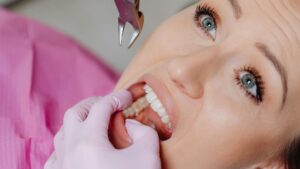

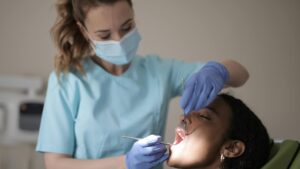



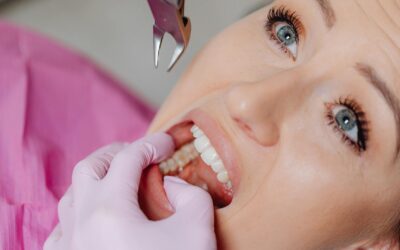

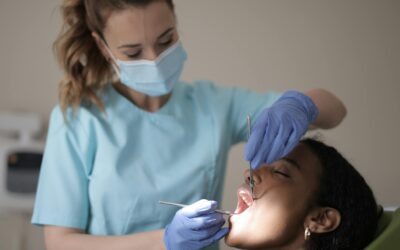
0 Comments